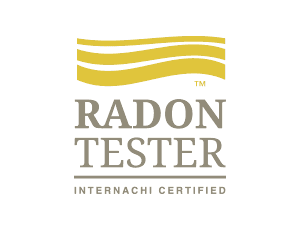Radon Inspections
What is radon?Radon is a radioactive gas that is produced naturally by the breakdown of uranium in the ground. Since radon can't be seen, smelled, or tasted, it can get into your home undetected. In outdoor air, radon is diluted and therefore not a concern. But in confined spaces like your house, radon can build up to high levels and become a health risk. Radon can enter your home any place where the house touches the soil and there is an opening. |
 |
Possible entry points into your home include:
- cracks in foundation walls and floor slabs
- construction joints
- gaps around service pipes
- support posts
- window casements
- floor drains
- sumps or cavities inside walls
- dirt floors
Health Risks
Radon exposure increases your risk of developing lung cancer. It is the second leading cause of lung cancer after smoking.
Your risk of cancer depends on several factors:
- the level of radon in your house
- how long you are exposed
- whether you smoke (exposure to radon and tobacco use together can significantly increase your risk of lung cancer)
Did you know?
It is estimated that a non-smoker exposed to high levels of radon over a lifetime has a one in 20 chance of developing lung cancer. That estimate increases to one in three for a smoker exposed to high levels of radon over a lifetime.
Testing for Radon
Almost every home in Canada has some radon. But the levels vary from one house to another, even if they are next door to each other.
The only way to know if you have a radon problem is to test your home. It is simple and inexpensive.
You have two options for testing:
Hire a certified radon measurement professional and you will be educated as to the most cost effective way to deal with radon mitigation , should the need arise.
Do it yourself. Home radon test kits cost between $30 and $60 and can be purchased from some hardware stores or ordered by phone or online. Kits include a radon detector that is meant to be exposed to the air inside your home for a period of time and then sent to a lab for analysis.
Health Canada recommends using a long-term test device for at least three months. The best time to test is between September and April, when your windows are mostly closed.
Reducing Radon in your Home.
If the radon level in your home is above the Canadian guideline of 200 becquerels/metre³, you need to reduce it. The higher the radon level in your home, the sooner it needs to be reduced.
A certified radon mitigation professional can help provide you with the most effective radon reduction solution.
One of these solutions is a commonly-used method known as sub-slab depressurization. A pipe is installed through the foundation floor and is piped to the outside with a small fan attached, which draws the radon from under the house and pushes it back outside, before it can enter your home. This solution can reduce the radon level in a home by more than 90%.
Increased ventilation and sealing of radon entry points can also help reduce radon levels, but these solutions may not be as effective as sub-slab depressurization.